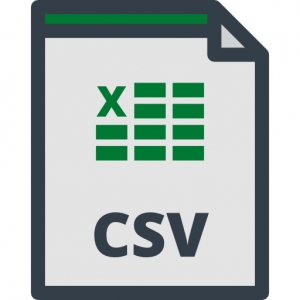Introduction
AI data analysis is more than just a trend; it’s a powerful tool for businesses to optimize operations, better understand customers, and make strategic data-driven decisions. However, successfully integrating AI into your data analysis processes requires careful planning and execution.
This guide will walk you through the steps to integrate AI data analysis into your business, from data preparation to team training and continuous optimization.
1. Define Your Business Objectives
The first and most crucial step in integrating AI data analysis is to clearly define your business objectives. Ask yourself, “What do we want to achieve by using AI for data analysis?”
- Process Optimization: Are you looking to use AI to streamline production processes, reduce downtime, or lower operational costs?
- Better Customer Insights: Is your goal to analyze customer behavior to create a personalized experience?
- Revenue or Demand Forecasting: Do you need to forecast revenue, sales trends, or product demand to manage inventory effectively?
Clearly defining your goals will guide the entire AI implementation process, from choosing the right data to building an appropriate model.
2. Prepare Data for AI
AI can only deliver accurate results when provided with high-quality, extensive data. To prepare for AI data analysis, businesses should follow these steps:
- Data Collection: Identify and gather important data sources, including sales data, customer behavior, and data from marketing channels or IoT devices.
- Data Cleaning: Ensure the data is free from errors, duplicates, or missing information. Clean data is essential for accurate AI predictions.
- Data Standardization: Make sure all data sources are compatible in format, making it easier for AI to analyze and learn from the data.
This data preparation step ensures that your inputs are high-quality and reliable, providing a solid foundation for AI models.
3. Choose the Right AI Tools and Platform
With quality data in place, the next step is to choose the right AI tools or platform to perform the analysis. Consider the following factors:
- Compatibility: Select a platform that integrates easily with your existing systems.
- Scalability: Ensure the platform can scale as your business grows and your data volume increases.
- Ease of Use: If your team lacks technical expertise, look for AI tools with a user-friendly interface and easy-to-use features.
Platforms like Datalyst.ai offer comprehensive solutions for deploying AI data analysis, with flexible integration and scalability options.
4. Build AI Models Based on Your Data
Once you have a platform in place, the next step is to build AI models tailored to your business data. This step is crucial because models learn from historical data to make future predictions.
- Choose the Right Algorithm: Based on your business objectives and data type, select the appropriate machine learning algorithms, such as linear regression, neural networks, or time-series models.
- Train the Model: Train the model on historical data to identify patterns and trends.
- Test and Fine-Tune: Assess the accuracy of the model and fine-tune parameters to optimize prediction results.
Building accurate models ensures that predictions are reliable and valuable for your business.
5. Train Your Team on AI Usage
For AI data analysis to be effective, team members need to understand how to use the tools and interpret the AI-driven insights.
- Basic Training: Offer training on how to use the platform and view reports or visualizations.
- Data Literacy: Equip team members with the necessary data literacy skills to interpret AI insights and make data-driven decisions.
- Continuous Learning: Arrange advanced training as the platform updates with new features or as your analytical needs evolve.
Training your team is essential to fully utilize the power of AI data analysis.
6. Monitor and Continuously Optimize
Once the AI model is up and running, it’s crucial to continuously monitor and optimize to maintain its effectiveness.
- Track Performance: Evaluate the model’s performance by monitoring specific KPIs, such as prediction accuracy and ROI on data-driven decisions.
- Adjust When Needed: If data changes or new trends arise, adjust the model to keep it relevant and accurate.
- Continuously Update Data: Regularly add new data to the model to help AI learn and improve over time.
Monitoring and optimizing is an ongoing process, ensuring that AI data analysis remains aligned with your business needs.
Conclusion
Integrating AI data analysis into your business can help improve operational efficiency, enhance decision-making, and provide a significant competitive advantage. By defining clear goals, preparing quality data, selecting the right platform, building models, training your team, and monitoring performance, your business can harness the full potential of AI data analysis.
If you’re ready to begin this journey, Datalyst.ai provides a comprehensive AI data analysis platform that makes it easy to incorporate AI into your data analysis processes. Discover how Datalyst.ai can support sustainable, data-driven growth for your business.









